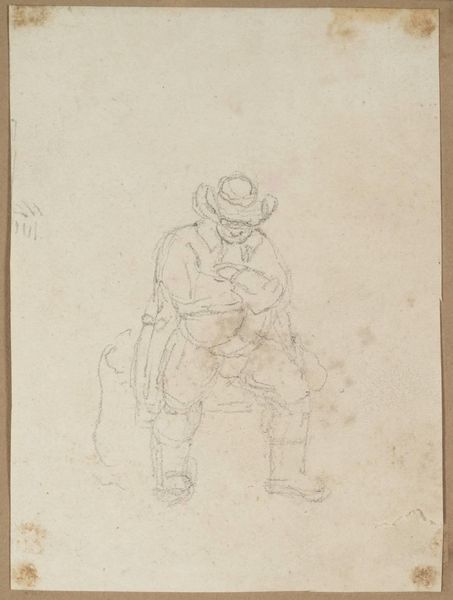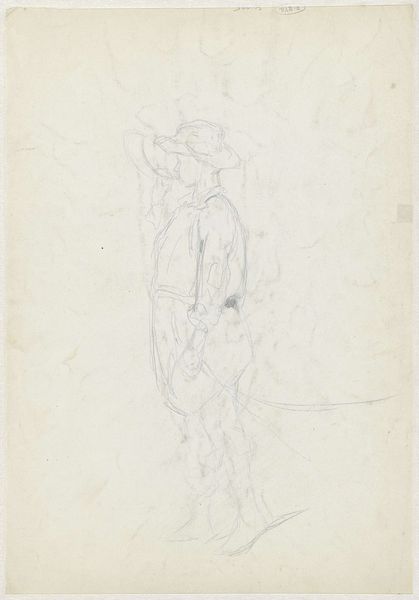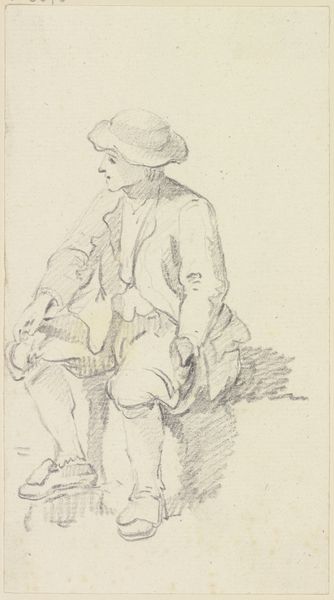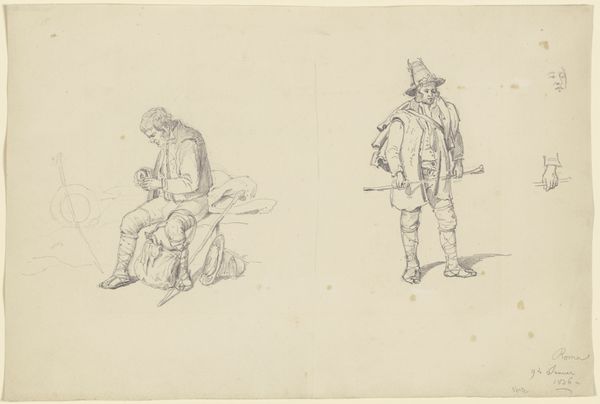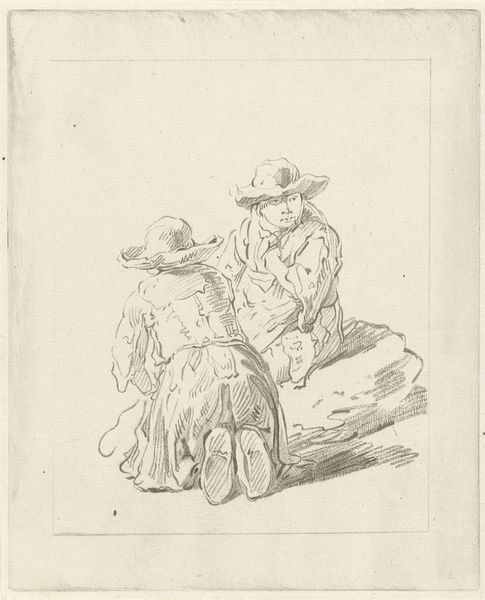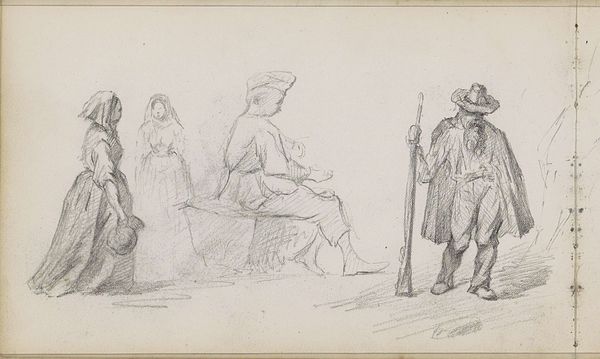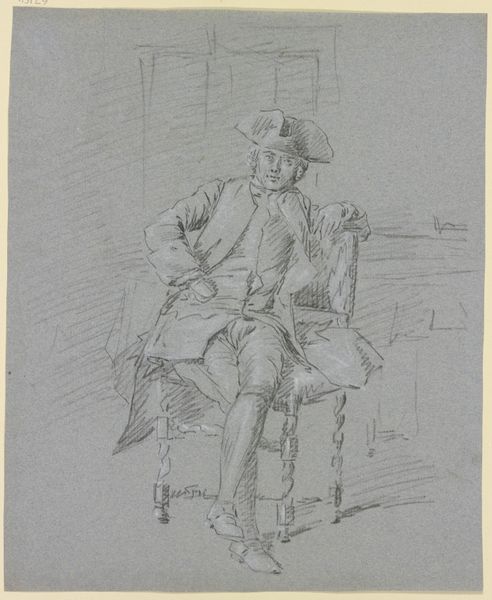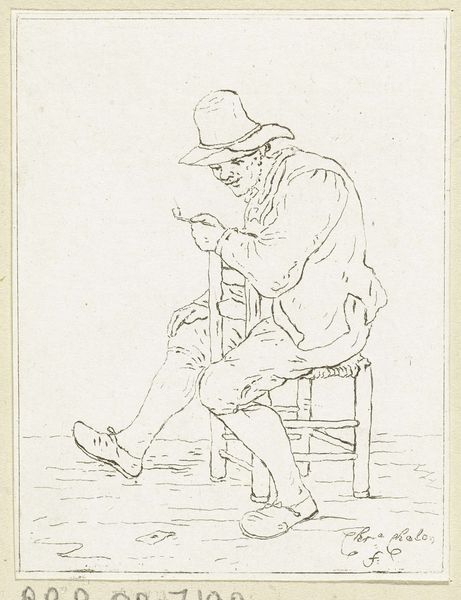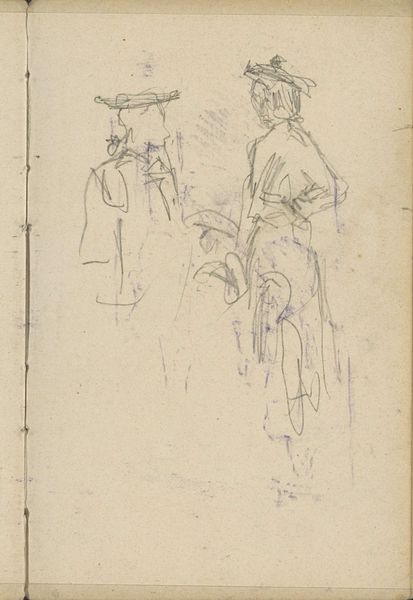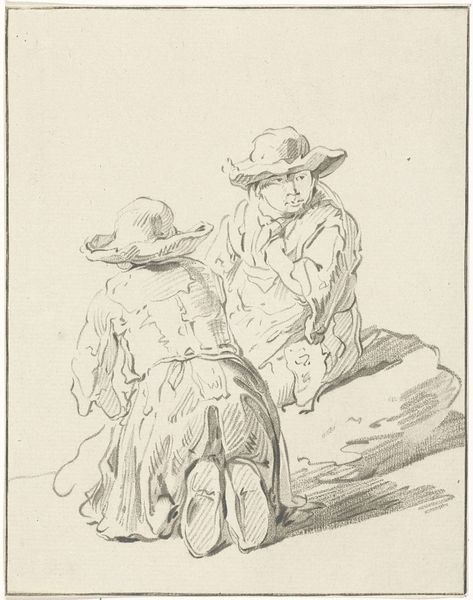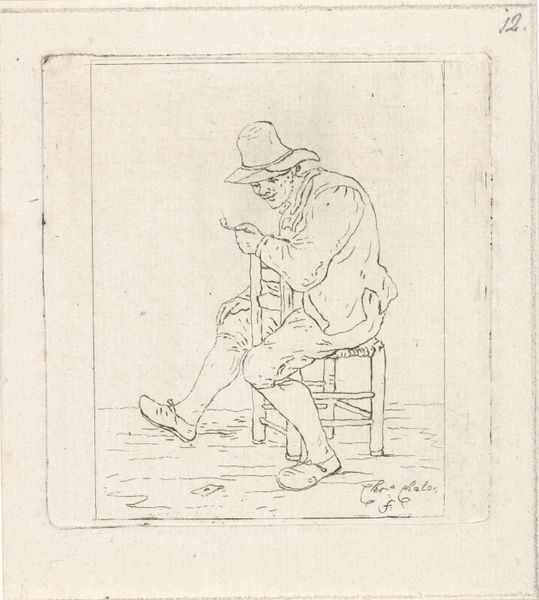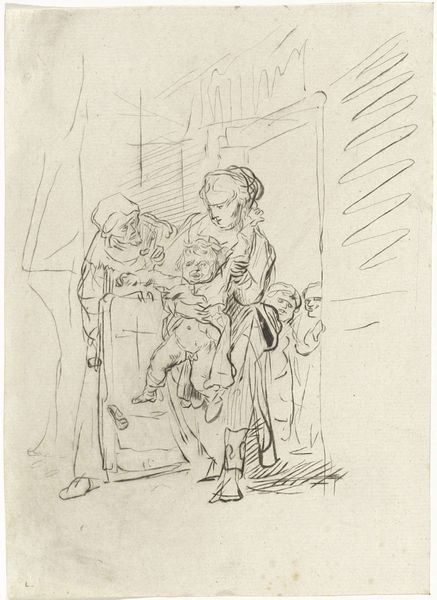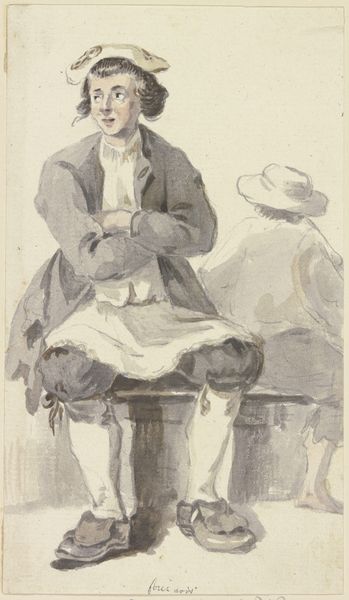
drawing, pencil
#
portrait
#
drawing
#
pencil sketch
#
sketch
#
romanticism
#
pencil
#
sketchbook drawing
#
genre-painting
Dimensions: height 215 mm, width 183 mm
Copyright: Rijks Museum: Open Domain
Curator: Ah, this pencil sketch, "Twee schetsen van een reiziger, staand en zittend," or "Two sketches of a traveler, standing and sitting," is by Jordanus Hoorn and dates roughly between 1763 and 1833. What do you make of it? Editor: My first thought? "Understated gentility." A relaxed moment, a world away from royal portraits but somehow imbued with a quiet, observational elegance. It makes me think about the experience of leisure... Who has time for these stolen moments, captured on paper? Curator: Exactly! This isn't about power or status, but something far more human, a snapshot of the artist’s world perhaps? Look at the way Hoorn captures the subtle shift in posture. The seated figure, leaning back, seemingly lost in thought; the standing one, patient and still. There's a feeling of contemplation, and observation. I can't help but think they look so lonely, but at ease. Editor: Lonely yes, but I feel something a little deeper. The casual way they are rendered belies some real anxieties, if you think about it. Who are these travelers? Where are they traveling to, and what do they expect to find when they get there? This was a period of massive colonial expansion and global migration, with new discourses of "the traveler," that often obscured the unequal relations inherent to traveling across social classes. Curator: That's fascinating! They appear unburdened, but you are suggesting we need to consider this in a global context. This reminds me to look more closely, perhaps question the immediate simplicity and dig into the politics of this time, which must have influenced even an everyday street scene like this one. I wonder if he intended to portray them in that light, as representatives of some kind of emerging societal shift? Editor: Perhaps, but I’m equally interested in their clothing – that specific hat, that coat... How do they signify belonging, even as they travel? Were they members of certain exclusive guilds or associations who would have shared values rooted in that sense of belonging, and a common history of wealth creation at someone else's expense? That's the reading I am more interested in than who they are representing in this case. Curator: A great point to make, about the significance of those sartorial signifiers, in the time they lived. There’s a simplicity to this sketch that can easily be missed if we are only appreciating the style and technique without deeper inquiry. Editor: Precisely. The act of sketching implies something larger. An opportunity to question what we accept as given about the movement and settling of people at any period of time.
Comments
No comments
Be the first to comment and join the conversation on the ultimate creative platform.
